♤ art ♤ culture ♤ politics ♤ click the top left corner of each post to view my commentary. angelica crimmins.
Don't wanna be here? Send us removal request.
Link
I think this project initiates an ongoing, invented community. The group is formed of participants who interact with the exhibit in the gallery space. The artist has already determined the set of activities to be executed by the group members and the project establishes the group's identity. Community members participate in a communal event that is ongoing when they take a bracelet and leave their own wish. Taking the bracelet beyond the gallery space creates a more intimate community between the person who first created the wish and the person who identified with it. In a sense, this is also a community of mythic unity-- where members are connected by a sense of abstract commonality.
Rivane Neuenschwander’s I Wish Your Wish is a participatory art installation piece first shown at the Museu de Arte Moderno Aluisio Magalhaes in Recife, Brazil in 2004. In traditional São Salvador church Nosso Senhor do Bonfirm pilgrimage practices, ribbons are...
18 notes
·
View notes
Photo
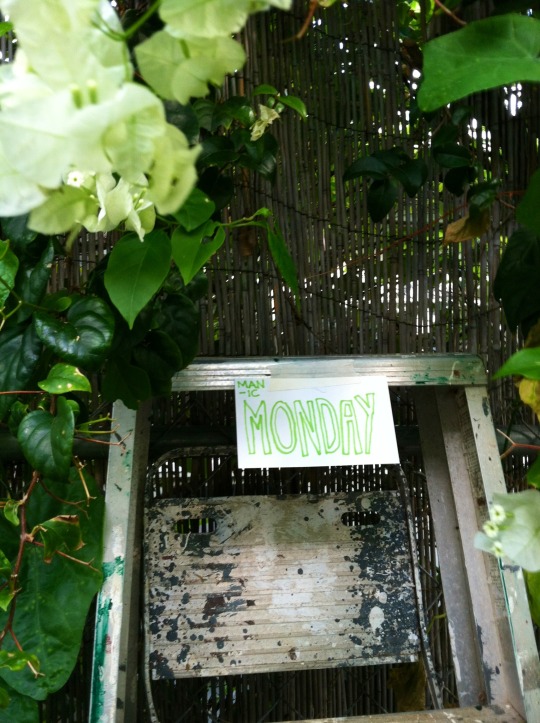
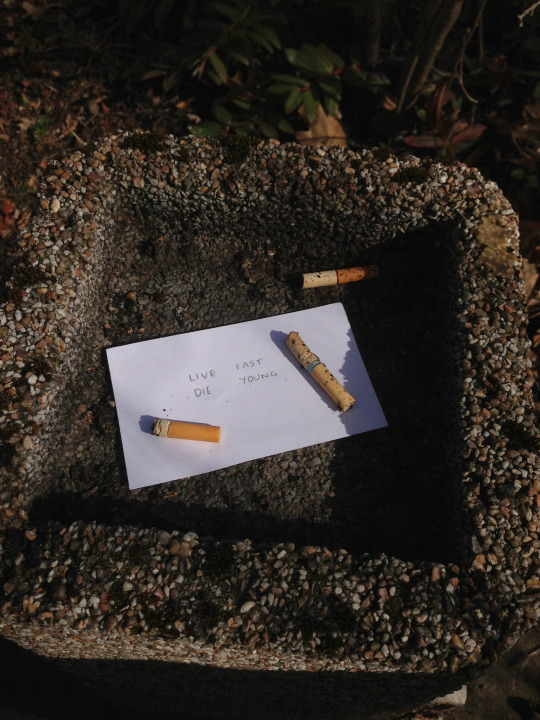
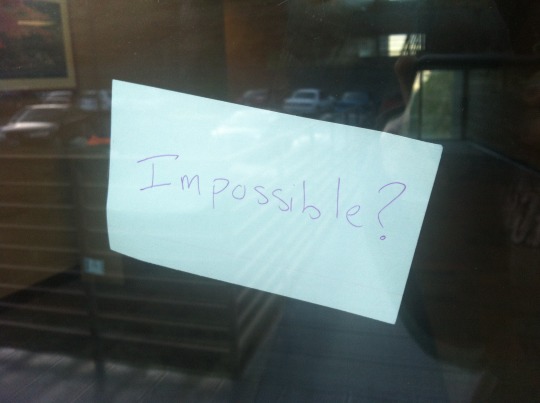
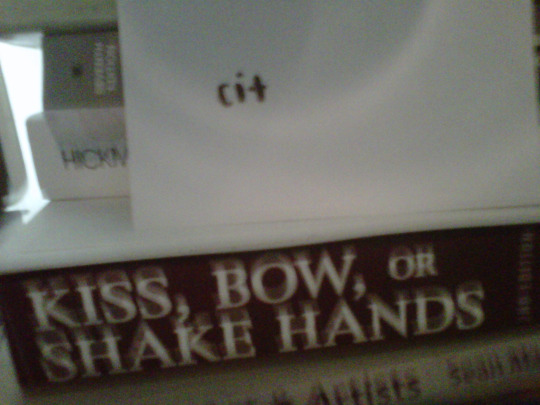
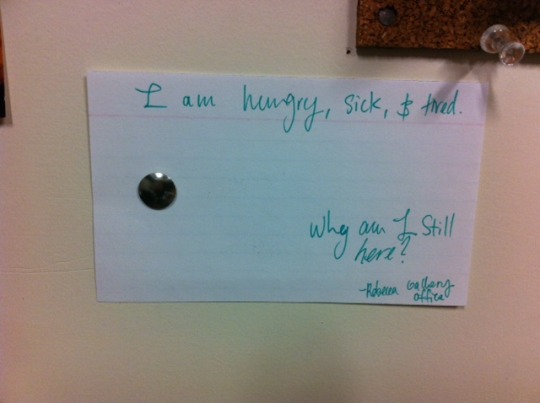
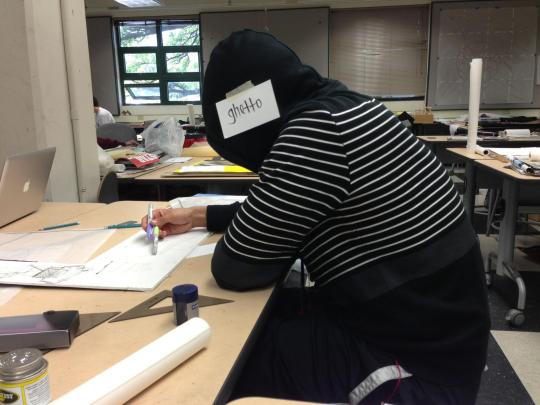
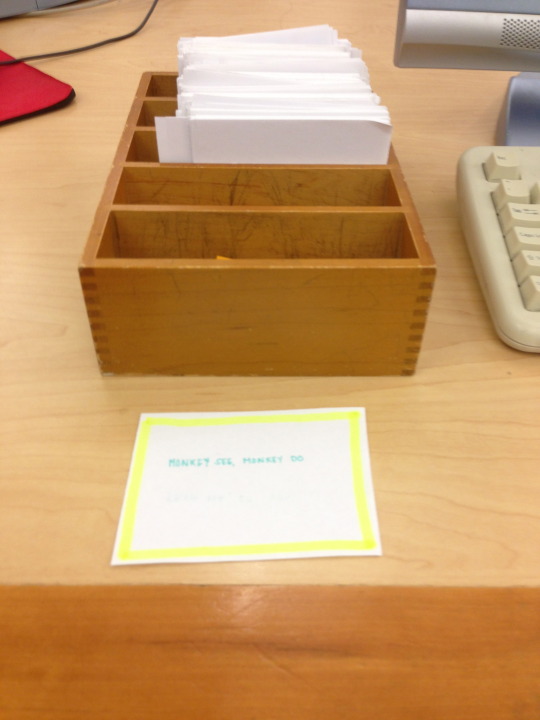
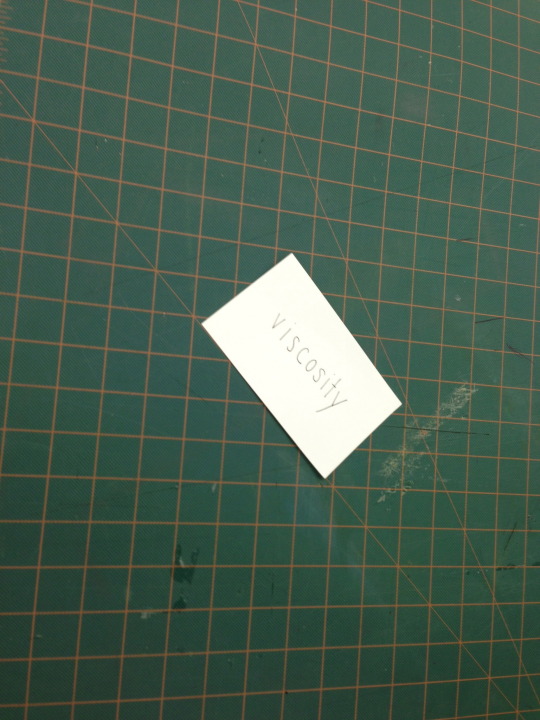

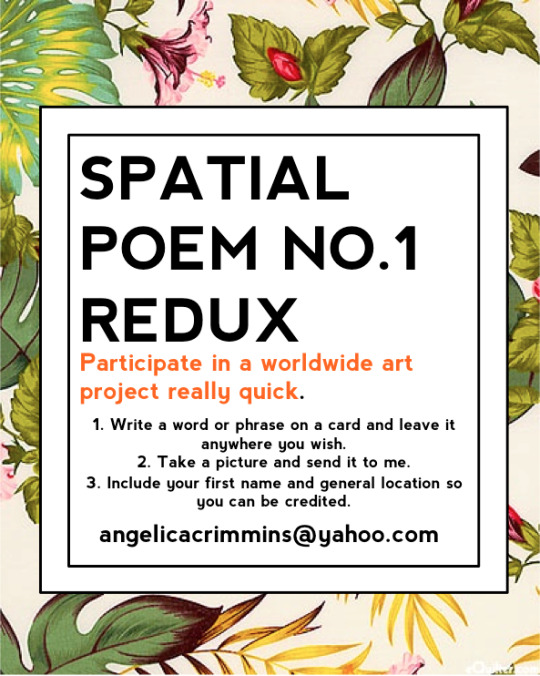
This is a redo of Fluxus artist Mieko Shiomi's Spatial Poem No. 1 (1965). In this particular project, participants were asked to write a word on a card and leave it anywhere in the world. She mailed artists all over the globe asking them to participate and mail back documentation. She then documented each location on a map which you can view here. In this project Shiomi encouraged an exchange that spanned the entire globe.
I wanted to stay true to the spirit of the project but expand upon it by way of technology and social media. So I posted a flyer on Facebook, Tumblr and Twitter where anyone could quickly email or text me a photo of their card. Surprisingly, I didn't get as many back as I thought I would and it's been nearly a month since initiation. People are lazy bums. I didn't do the map part because submissions have primarily been from the west coast.
Anyway, here are pictures of my favorites so far. I am still taking submissions so follow these easy instructions:
1. Write a word or phrase on a car and leave it anywhere you want.
2. Take a photo of your card in the place you are leaving it.
3. Email the photo to me at [email protected] and be sure to include your first name (last name optional) and LOCATION in the body of the email.
Thanks! Hope to hear from some of you.
3 notes
·
View notes
Photo
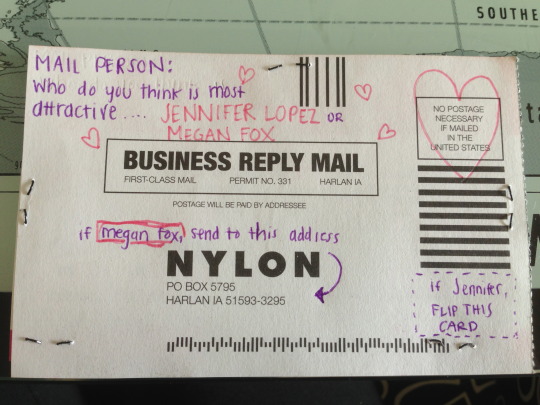
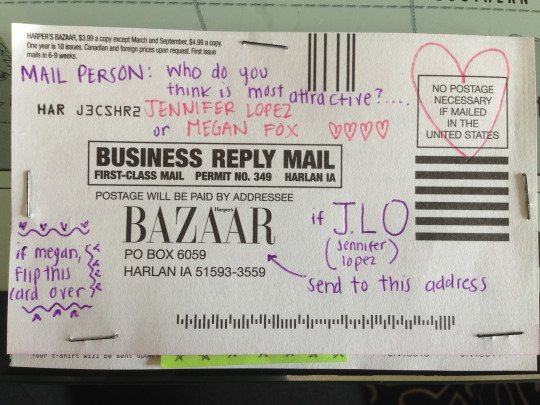
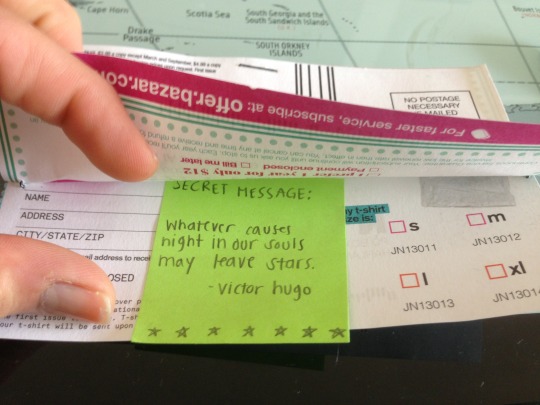
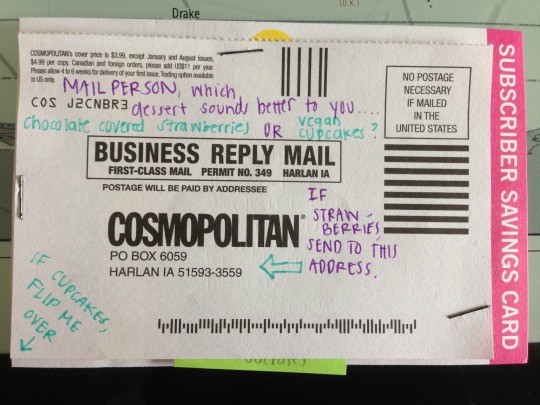
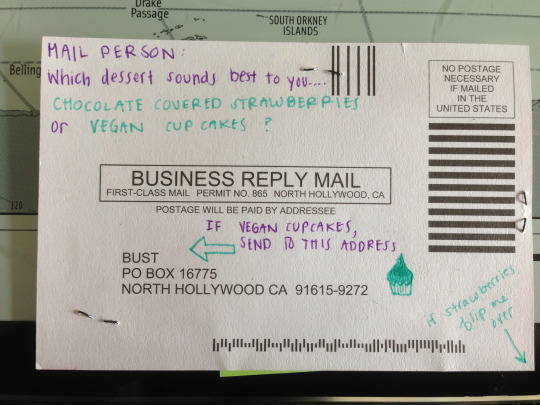
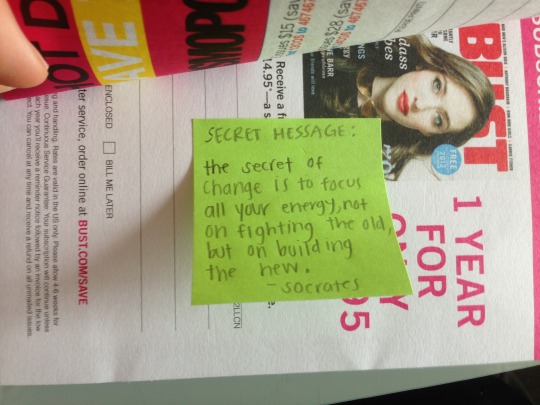
I kind of fell in love with Temporary Services--one of the groups of artists I had to research for the poster project. Temporary Services is non-commercial collective made up of three Chicago/Copenhagen based artists. The collective formed in 1998 as alternative spaces lost financial support in the wake of the 90's Culture Wars. With resistance to established media markets, the group formed to support non commercial, experimental and political artists. One of the main goals of the group's work is to provide an audience with a sense of agency to explore social and public spaces and to encourage playful interaction. I chose to redo one of their projects that accomplishes these goals.
The Business Replies project confronts the issue of excessive waste generated by junkmail. It is a way of reacting to direct marketing and solicitation, which Temporary Services calls "advertising assaults". Temporary Services has put together a guide full of creative solutions and strategic uses of business reply cards and advertisements. The pdf guide is downloadable for free on their website. Click here to view it.
For this particular redo, I chose a strategy from the booklet called "Postman's Choice" which was inspired by the mail art pieces of Ben Vautier. I stapled together two business reply cards from two different magazines. They are addressed to two different corporations so the postage worker must make the personal decision, based on a question, as to which corporation should receive it.
For example, in my first postcard I asked: "Mail Person, who do you think is more attractive: Jennifer Lopez or Megan Fox?" If they choose Jennifer Lopez, I instruct them to send the postcard to Harper's Bazaar. If they choose Megan Fox they should send it to NYLON magazine. I also inserted a secret message between the stapled postcards so someone in the mailroom could discover it. In the second postcard I ask "Which dessert sounds better to you?" Chocolate covered strawberries (to be sent to Cosmopolitan) or vegan cupcakes (to be sent to BUST magazine).
This little project détournes what would be considered junk and waste into interactive art that travels the public sphere. It strategically takes advantage of the pre-paid postage by large corporations as a way to provide for noncommerical interactions.
heheheehehe.
*click on each image for a larger view.
19 notes
·
View notes
Photo
Détournement is the technique of subverting existing images in order to undermine their existing meaning. This unravels the intended meaning and reverses the ideological function of the original image to provide a critique of culture and politics through irrationality and playfulness.
French artist Soasig Chamaillard repurposes damaged and found statuettes of the Virgin Mary in a form of adorable détournement. Chamaillard blends religious iconography with pop culture characters, merging the holy past with our present day culture of media consumption.
To no surprise, she was attacked by Catholic critics who found her work "scandalous," "shameful," and "blasphemous."
She smartly responded: "I suspected that this could shock the sensibilities of certain people, but I didn't think there would be so many of them." She continued, "Faith should be strong enough to remain unshaken by simple objects. I think they need to step back from the object and not forget that it's an artistic work."
Question for Consideration: How does the controversy surrounding her work, along with her response, relate to Peggy Phelan's assertion about the "power of the image" on pages 11-12 of the reading Serrano, Mapplethorpe, the NEA, and You: "Money Talks": October 1989 ?
(ARTINFO France)
(Outside Blog: letsbuildahome-fr:)
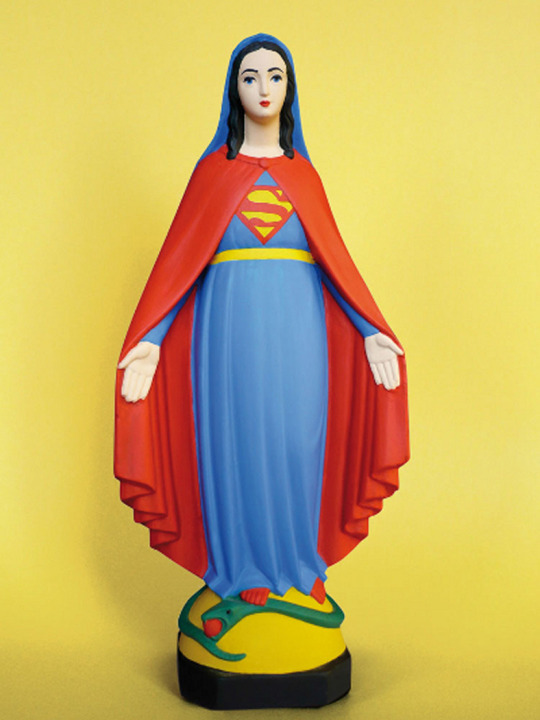


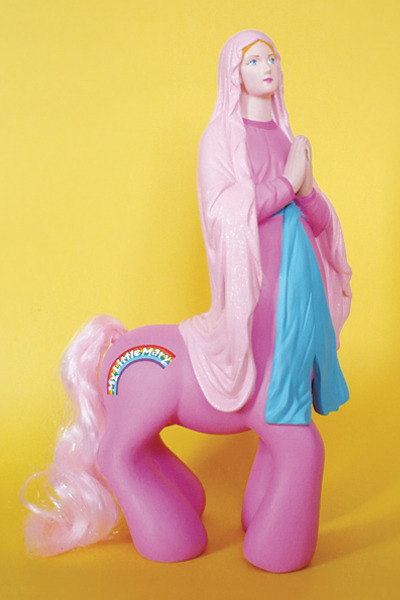



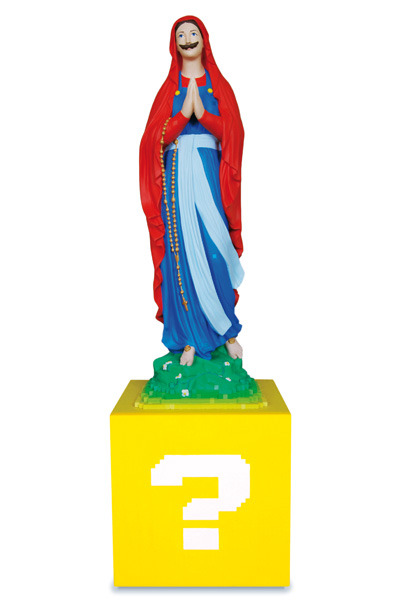
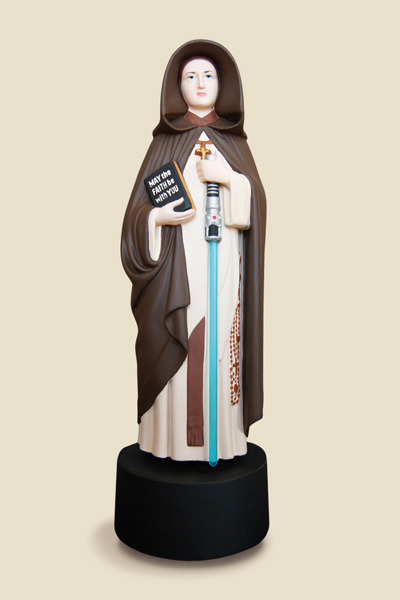
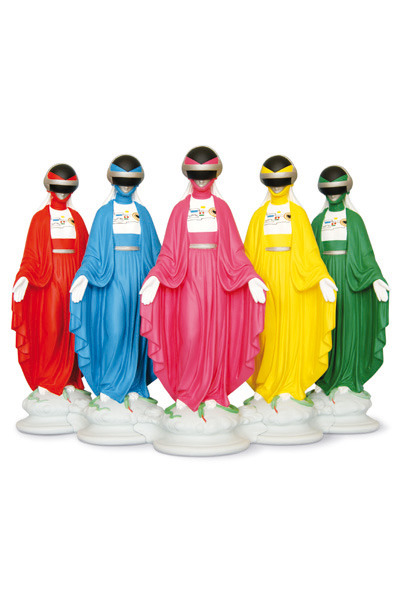
Soasig Chamaillard
12K notes
·
View notes
Photo
It's kind of funny how much height plays a role in everyday life. Especially, in this case, in socialization. This was a brilliant way to construct an equal experience in social interaction. It eliminates at least one form of physical difference between participants, deconstructing a rather arbitrarily established form of status.
The change in height forces a change in perspective both physically and socially. This is an example of participatory and social art that responds quite literally to this post on the main tumblr blog. By changing the height of participants, their perceptions as well as their interactions with each other are altered. The materials of this art work (being the platform shoes) work to make this change in perception both conscious and unavoidable. For example that woman on the right probably knows she is a foot shorter than everyone and she probably feels SUPER LAME.
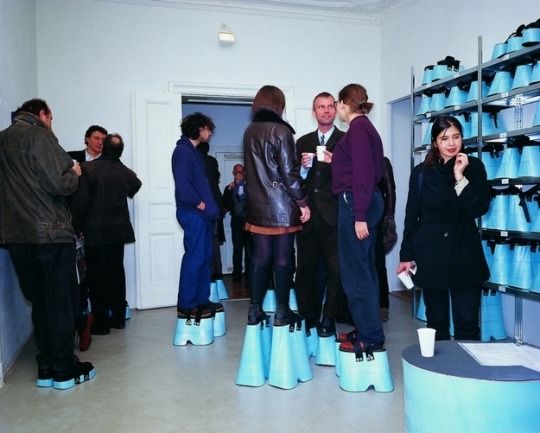
Having a party? Have friends who are conscious of their height? There’s no need for anyone to feel awkward if you host a “Same Height Party.”
I found this through a buzzfeed article about “50 People You Wish You Knew In Real Life.” A quick bit of Google research tells me that this was actually a participatory art project by Hans Hemmert in 1997. Entitled “Personal Absurdities”, the exhibition invited guests to put on a pair of blue Styrofoam shoes in order to achieve a height of 2 meters, thus eliminating any differences in height among participants.
12 notes
·
View notes
Link
Guerilla Art began in the 1980's in response to the take over of public space by commercial interests and the lack of authorized exhibition opportunities for artists. Today guerilla art can come in many forms, from yarn bombing to moss graffiti to good old wall murals. They are anonymous art pieces on display in public places. They are ways of voicing statements to a large audience without regards to authority. All in all, it is a way to reclaim urban space from commercialization and just plain ugliness.
Guerilla artists share similar grievances with the Situational Ironists in the protest against consumerism, capitalism and the banality of urban life through instances of play and disorientation. In many instances, guerilla artists are able to fluidly merge art forms that challenge the boundaries of traditional art genres.
Urban Art Core is an online collection of recent urban art. The site categorizes various works of street art in sections covering art shows, graffiti, guerilla art, street art, urbanism, urban design, and urban exploring. It focuses on content of the work as well as the larger context in which the work appears. Overall, it's a comprehensive and well organized site for artwork that can be difficult to categorize. I could seriously spend hours scrolling through this site.
3 notes
·
View notes
Photo
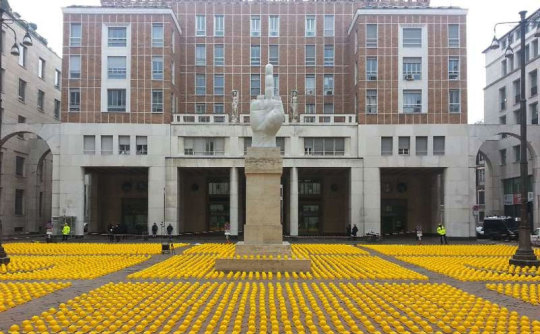
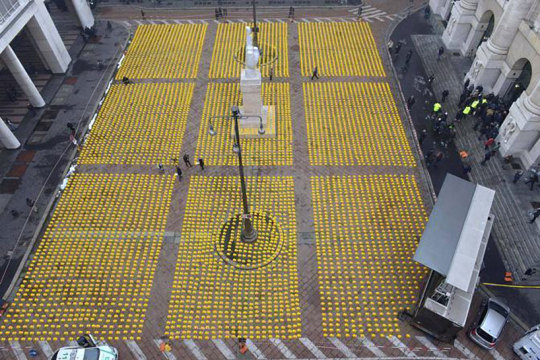
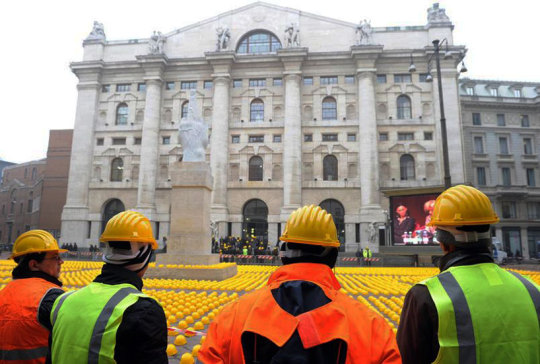
(Images via Milano Today)
On February 13, 2013, ten thousand yellow helmets were lined up neatly in the city squares in front of the Milan Stock Exchange building. Italian workers in the construction industry gathered in anger to protest their crippling disposition, brought on by the economic recession. The group included laborers, clerks, surveyors, architects and real estate agents.
According to data from the Center of Economic Research and Market Sociology, the construction sector has lost 157 thousand companies and 893 thousand employees. The yellow helmets represent a mere fraction of the unemployed.
In case the message was not clear enough, the helmets surrounded Maurizio Cattelan's giant Middle Finger statue. This sculpture was donated to the city of Milan by the artist and has generated in itself a massive city-wide controversy which you can read about further here.
This public art installation is a form of visual protest. It is similar to the socially driven public art of Culture in Action and the politically charged protests of the AIDS collective ACT UP. The yellow helmets represent the element of shared identity of the construction sector employees, classifying the group as a mythic community. The installation shares a politically relevant relationship with its space in front of the Milan Stock Exhange and creates a sense of urgency and social unrest. It is provocative with its explicit interaction with the social issue behind the matter of economics and politics.
0 notes
Photo
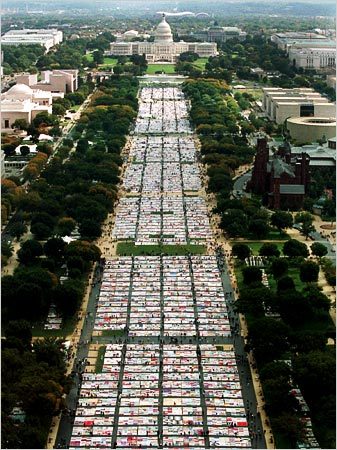
(Image Source)
In his essay on the NAMES Project, Weinstein refers to the quilt-making efforts as a 'ritual'. Identify 4 ways in which the NAMES Project functions as ritual:
The established formal structure of the NAMES project functions as a ritual to allow a unified form of grieving for those affected by the deaths of AIDS. Each panel of the quilt celebrates a person who has died of AIDS, creating a work of collective personal histories. Loved ones gather together to form a community. Accompanying the display of the quilt is a ceremony of formalized behavior and actions. The set up of the quilt requires the collective participation of the formed community. Reading of the names on the quilt, one by one, as they are unfolded evokes personal engagement and rigorous structure. It is a way for people to communicate feelings of fear, grief and love on both a personal/ intimate level as well as on a public/community level.
0 notes
Photo
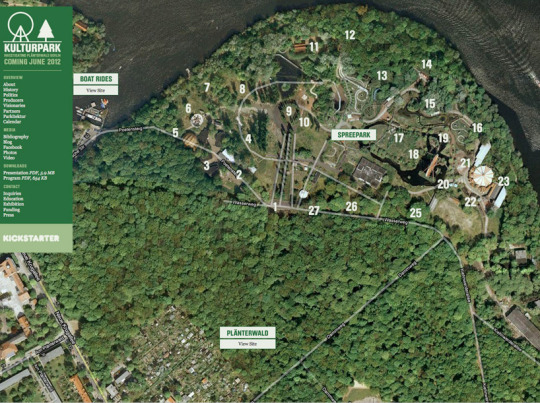
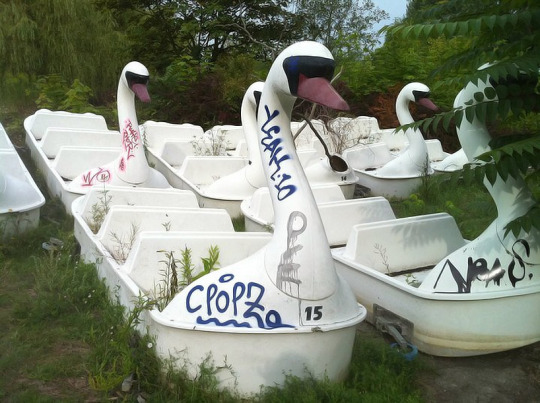
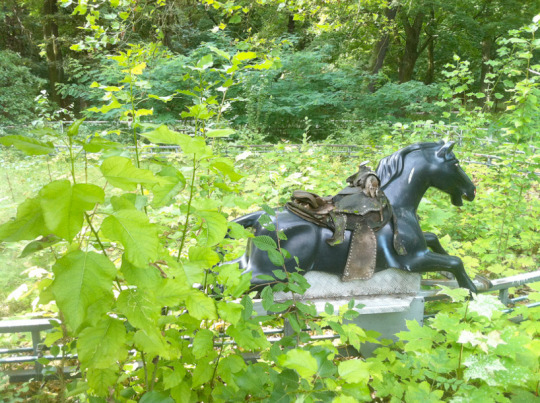
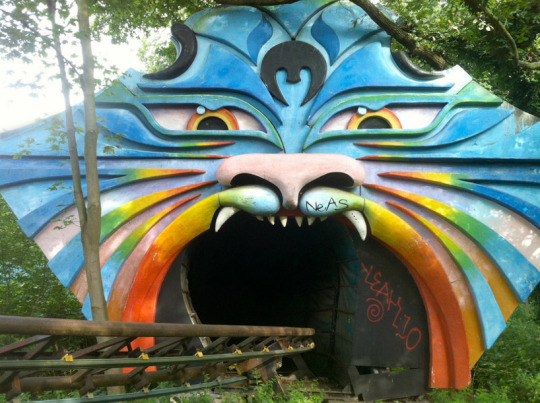
(Kulturpark, 2012: Images via designboom)
Kulturpark is a collaborative public art installation developed to explore an abandoned amusement park in east Berlin. The four artist team called "Musement" (including curator-artists George Scheer and Stephanie Sherman, Argentinean artist Augustina Woodgate and curator Anthony Spinello) is planning to put in several large scale, site-specifc art installations using materials already in the area. The artist team wants to use the participation and imaginations of Berlin based artists, students, and the general public to generate ideas and proposals to repurpose the site.
Kulturpark was the first amusement park in all of Eastern Europe and was opened by the German Democratic Republic in 1969. With the fall of the Berlin Wall the park was bought and privitized. It was open to the public until 2001, when it went bankrupt. The artists behind the Kulturpark project want to keep the historical, cultural and social integrity of the park while also exploring possibilities for its evolution.
Before opening the park to public imaginings in June 2012, the Musement artists conducted research of the park funded by an Art Matters, NY grant. In the manner of the Situational Ironists' method of psychogeography, the artists explored the physical, relative and invisible dynamics of the park and used them as a basis for their artistic vision and goals. They came to understand the amusment park as space of movement, danger, risk, attraction and liberation. Taking into account this particular park's history, the artists want to use it to connect communities through exploration and preservation.
The park is now reopened to the public in different forms. There are creative camps to unite Berlin-based visionaries; a Kultur exchange program to host students and groups for discussions, workshops, and research about the park and its contents; and there are walking tours where the public participates in a dérive-like exploration of the park in order to generate ideas for its future use. While borrowing some tactics of the Situational Ironists, the Musement artists differ in their wish to use participation as social compromise rather than social critique.
The artists want to offer use for the park outside of commodity and capital. They seek to use the park as a material instrument for compromise, ideology and social education. The Kulturpark project engages a community of Berlin-based civilians in active participation of a site-specifc, ever-evolving project to link past memories and future possibilities.
To read more about the plans of Kulturpark, visit their site.
6 notes
·
View notes
Photo
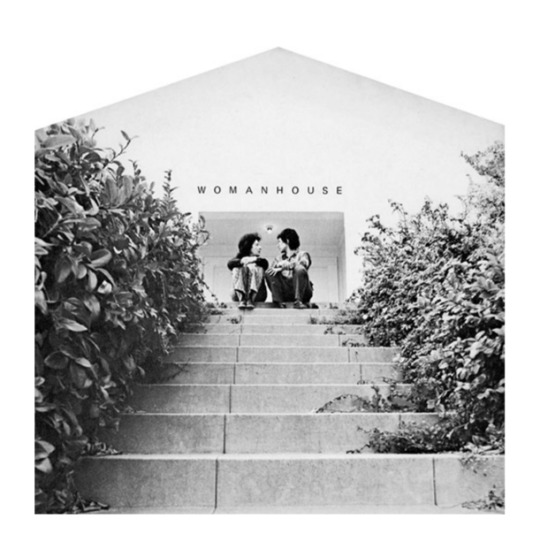
(Image: Womanhouse catalogue, Feminist Art Program at CalArts, 1972. Designed by Sheila Levrant de Bretteville.)
Womanhouse was a collaboration between Judy Chicago, Miriam Schapiro and their 25 students in the Feminist Art Program (FAP) at the California Institute of the Arts formed in 1971. The collective work meant to force students to push their limitations as women and artists and maintained a psychological goal of developing strong egos and new art based on life experience. The communal project's purpose was to test the new methods and workability of the FAP.
The students transformed an abandoned Hollywood mansion into an environment that expressed the experiences of women in their traditional domestic domain. Students first had to undergo the labor intensive project of the house's reconstruction. They developed new skills as they executed unfamiliar "masculine" tasks to likes of operating power tools and painting/plastering walls. Students then divided work by room to transform the traditional sense of the home environment to one that conveys the message of homemaking as entrapping and deadening. Each room tackled different aspects of womanhood and the house in its entirety distorted the concept of female homemaking by perverting the home environment. To this effect, the house meant to revise women's role in society by highlighting their oppression.
The house was opened to the public from January 30-February 28, 1972 and attracted a substantial amount of press coverage as well as criticism. In addition to tours of the house, the students created various performance pieces and participated in conciousness-raising efforts as a form of therapy and a way to generate subject matter for art. Womanhouse was the first public exhibition of 'feminist art'.
To learn more about Womanhouse check out this site. This resource includes commentary and photos that were printed in the original Womanhouse catalogue. You can explore photographs of the house and read about the underlying meaning of rooms and performances. The site also offers links to other resources as well as a downloadable collection of critical essays.
3 notes
·
View notes
Quote
Art really does expand the imagination and release new forms of the possible. We must stop finding this truth embarrassing, retrograde, nostalgic.
Peggy Phelan (Serrano, Mapplethorpe, the NEA, and You: "Money Talks": October 1989)
Phelan comments on the larger implications of the NEA debates, ones that extend beyond censorship and freedom of expression. She demands that the art community broaden the argument insisting that the health of art directly influences the health of the nation.
She goes on to challenge the art community with tough questions to prompt introspection into its own values, perspectives and connections to democracy, history and the human imagination.
In this particular quote she questions the true power of the image and its place in both the art world and in public art. She wants us to question the dimensions of the image in both politics and our own individual physic imaginations. We must explore these tough questions in order to articulate a defense on the true value of art.
1 note
·
View note
Photo
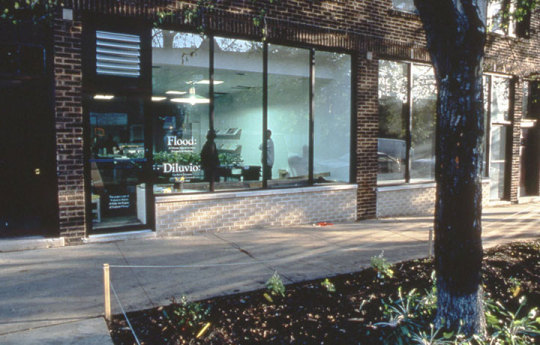


Flood, 1993 A Volunteer Network for Active Participation in Healthcare
769 Greenleaf St, Chicago IL Commissioned by Sculpture Chicago's "Culture in Action"
Flood was a group of 20-30 volunteers organized by the artists team 'Haha'. The group built and maintained a hydroponic garden for the production and distribution of food and theraputic herbs for AIDS patients in local clinics. They transformed a vacant north Chicago storefront into the garden space, which also functioned as a resource center for the education of AIDS and safe sex. Flood volunteers networked with local healthcare organizations to plan weekly discussions, meetings, public lectures and special events.
Gardening became a metaphor for the nurture and care needed by living systems. This is directly comparable to the fragility of AIDS patients needing care and attention.
Flood was form of "Ongoing Invented Community" because its operation and existence extended beyond the exhibition context and institutional support by Sculpture Chicago. However, Flood did close in 1995. Yet as a result of the collective effort, a comprehensive HIV/AIDS facility opened in Rogers Park in 1997. The facility contains a food pantry, an alternative high school, community center and administrative offices for community organizations.
Flood was one of 8 community based projects apart of the "Culture in Action: New Public Art in Chicago" program. The temporary exhibition program sought to provide forums for culture in underrepresented communities through the generation of culture from within the communities themselves. Each of its 8 projects were on display around the city of Chicago during the summer of 1993 though works were more focused on the relationships between artists and communities rather than the finished material "work".
Read more about Culture In Action here. Read more about the Haha collective here.
1 note
·
View note
Photo
Bruce Nauman - Going Around the Corner Piece - 1970
This piece is an exsistentialist video art installation that constructively destabilizes the spectators expectations of the gallery space as well as their role within it. The spectator approaches four white walls, forming a room that she is unable to enter. Above each wall is a surveillance camera and in each corner there sits a TV monitor. The screen displays the image of the back of the viewer's head. The viewer unavoidably assumes an active role as they walk around the white cube, forever seeing their own image as they turn every corner. As Gabby Hartel disturbingly puts it, "Man is both hunter and hunted by himself: a vicious circle."
Nauman's piece challenges the relationship between public and private as well as spectatorship and viewer environment. The surveillance camera captures a live event, existing instantaneously rather than a series of scripted moments constructed in a studio. In this, art becomes a process of self-creation.
I chose to reblog this because I found it similar to the antics of the Art Farm collective in its manipulation of TV sets and gallery space. Instead of planning and staging a media event, Nauman rejects traditional media and replaces it with unexpected and unavoidable self-observation of their viewer's own image.
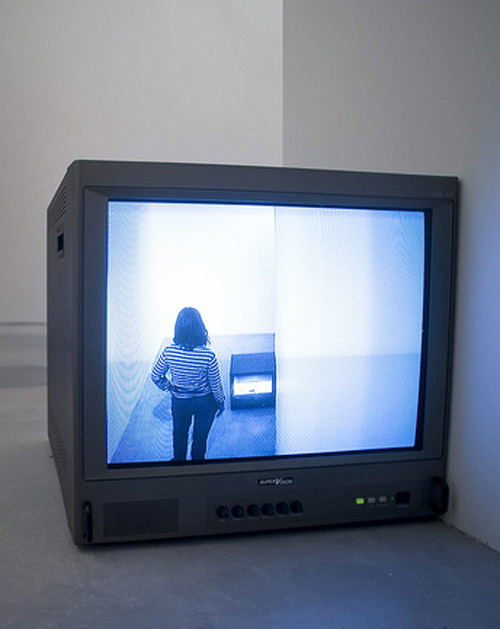
3K notes
·
View notes
Link
This is a link to the Paper Tiger video collective's blog. The Paper Tiger collective is a group of video activists formed in 1981 shortly after cable television was introduced to New York. The group creates public access shows, short documentary programs, media literacy and video production workshops, community screenings and grassroots advocacy as an alternative source of media outside of the mainstream.
Paper Tiger seeks to provide critical analysis of the mainstream media while providing an innovative model for community media. Projects are often anarchic in spirit and include innovative and satirical commentary on modern media culture.
The collective strives towards media reform through education and increased awareness of how media can influence social change. It counters media bias and misrepresentation by offering diverse perspectives and highlighting issues that have not been covered by the mainstream media. With the growth of social media and online video streaming, it seems like video collectives and media literacy are more relevant than ever.
The Paper Tiger blog presents a new video every week as well as a large collection of past videos archived neatly into categories ranging from Art to Culture to Politics. Seriously though, there are SO many categories and 30 years worth of videos, dating back to the Sony Portapack days. The blog also details current projects and ways the public can get involved. I've found some projects where you can submit your own video footage, so check it out if you want to contribute!
0 notes
Quote
One of the artist's and the humanist's great values to society is the mirror of self-examination which they raise so that society can become aware of its shortcomings as well as its strengths.
Senate Report No. 300 (1965)
Cited in the reading Robert Mapplethorpe: The Philadelphia Story by Judith Tannenbaum
The legislators who drafted the original statue authorizing the establishment of the National Endowment for the Arts anticipated that the issue of freedom of expression could be challenged when federal tax money was dedicated to the arts. They asked that freedom of artistic expression be given the fullest attention. To defend this they highlight art as a means of social reflection and a source of introspection. This quote asserts the important role of art in society as the artist is equated to the humanist.
The legislatures were correct in their early predictions of controversy. Nearly 50 years later artists and art institutions are still under constant scrutiny, having to defend themselves and their reputations as worthy of public funding.
Tannenbaum concludes that the NEA and censorship debates have forced individuals and institutions alike to reexamine our values and principles. It provokes us to question art's role and value in society. Especially through these debates art serves a greater purpose of reflection, rumination, provocation. The debates themselves have extended discussion and discourse beyond the art world and into the general public.
1 note
·
View note
Photo
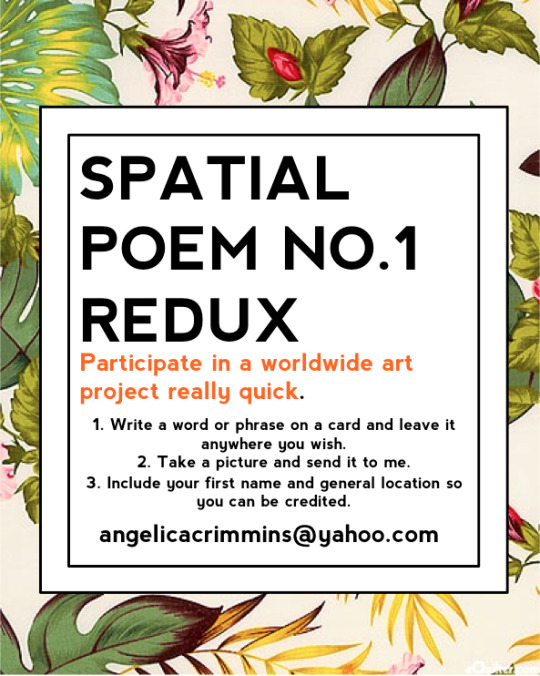
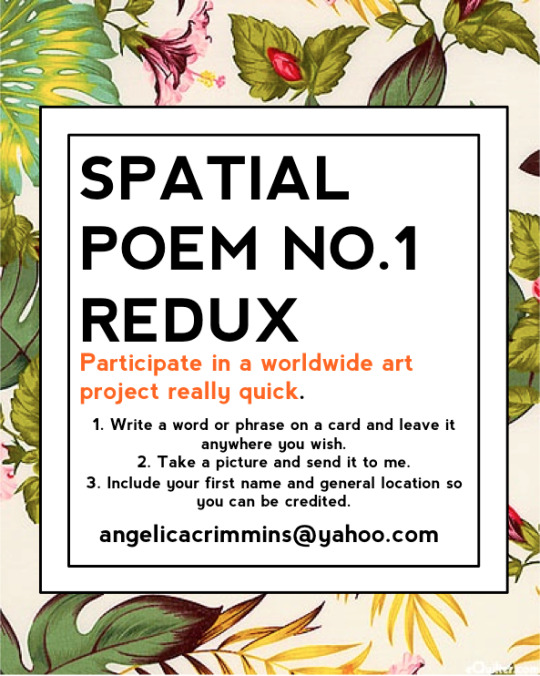
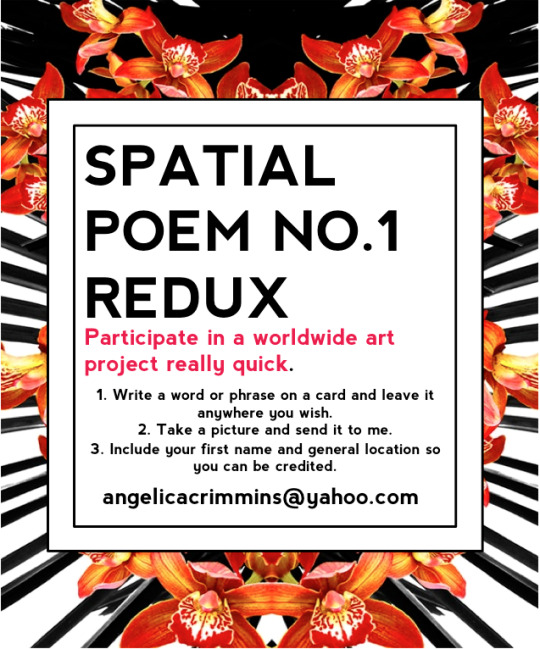
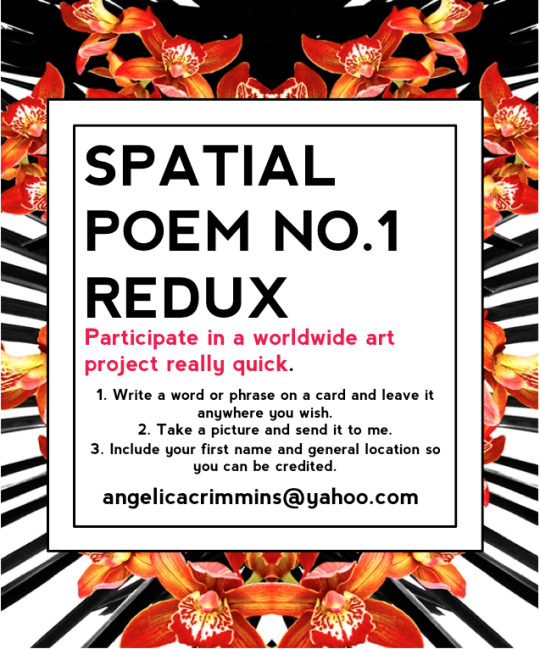
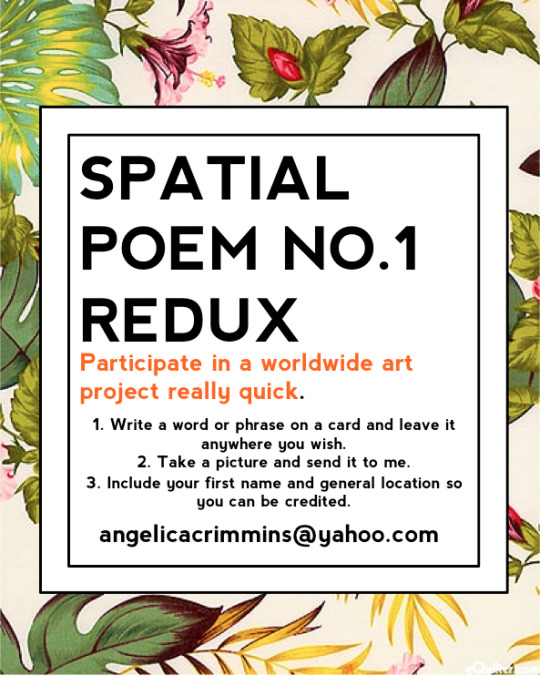
I’m doing a rendition of Fluxus artist Meiko Shiomi’s Spatial Poem No. 1. AND I WOULD LOVE FOR YOU TO PLEASE JOIN IN!
In this particular project, participants were asked to write a word on a card and leave it anywhere in the world. In 1965 she mailed artists all over the globe asking them to participate and mail back documentation. I’d like to stay true to the spirit of the project but expand upon it by way of technology and social media.
It’ll take less than five minutes! If you wish to participate follow these easy instructions:
1. Take a photo of your card in the place you are leaving it.
2. Email the photo to me at [email protected] and be sure to include your first name (last name optional) and LOCATION in the body of the email.
Thanks! Hope to hear from some of you.
XOXO
(reblogged from my other tumblr blog)
6 notes
·
View notes
Photo
l-u-m-i-n-a-r-i-a:
I am further reblogging this post because I too have noticed the increased tension between skateboarders and the public. During our little détournement excursion today, I noticed that a lot of the buildings around campus have little steel dots lined around the edges of exterior surfaces (like random concrete benches/half walls...I don't know the correct architectural term?). This is an overt mechanism of control to prevent skaters from grinding on surfaces and to keep them grounded. That's a little example of tension.
The first project kind of reminded me of the otro skate park in Brussels. Although it is situated in the public sphere instead of a gallery, it is still a designated area designed specifically for skaters. The whole glow-in-the-dark aspect is very GRAV-like in that it creates a playful, sensorial experience for the skater.
Also, check out this video that is totally NOT funny, but kind of relevant.
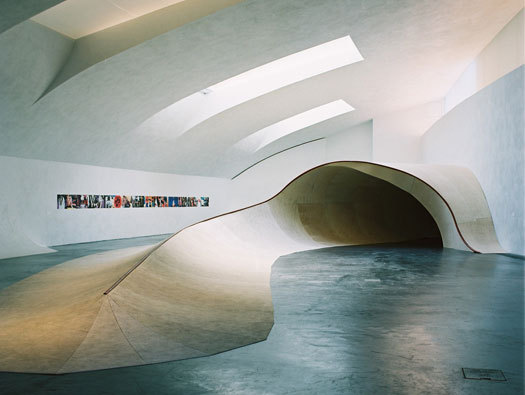
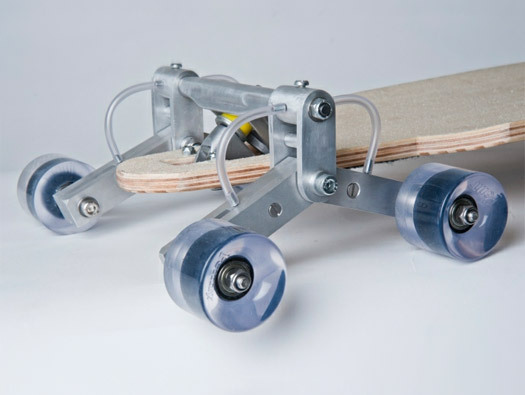
The two projects above address the continuing tension between skateboarders (also bladers, skaters, bikers, etc…) and the use of public space. The first is a sculpture that was shown at the Kiasma Museum of Modern Art in Finland. It is both aesthetically pleasing to look at, with softly curving surfaces and guiding lines—the pieces stands alone as a sculpture, while also being completely functional as a ‘skate park’. Holland brought the traditional architectural forms of the urban skate park into the fine-art gallery space. This brings attention to the sub-culture of skaters that are prevalent members of every city and the efforts on behalf of the city to either contain or appease the skaters. The sculpture also comments on the function of sculpture within the private gallery setting, breaking boundaries between the role of the viewer in relationship to the art object.
The second project, “Street Rover” is similar to the first in that it uses skateboarding as its subject. The piece is a skateboard that has been designed to make the urban environment, including stairs, railings, fences, and walls, more easily accessible. This directly speaks to public space developer’s efforts to prevent skateboarding and addresses the “increasing tension surrounding rights to public space.”
6 notes
·
View notes